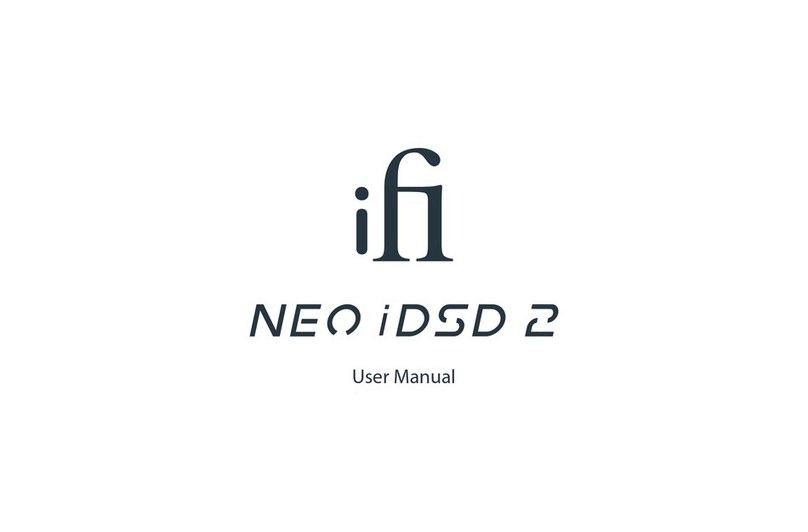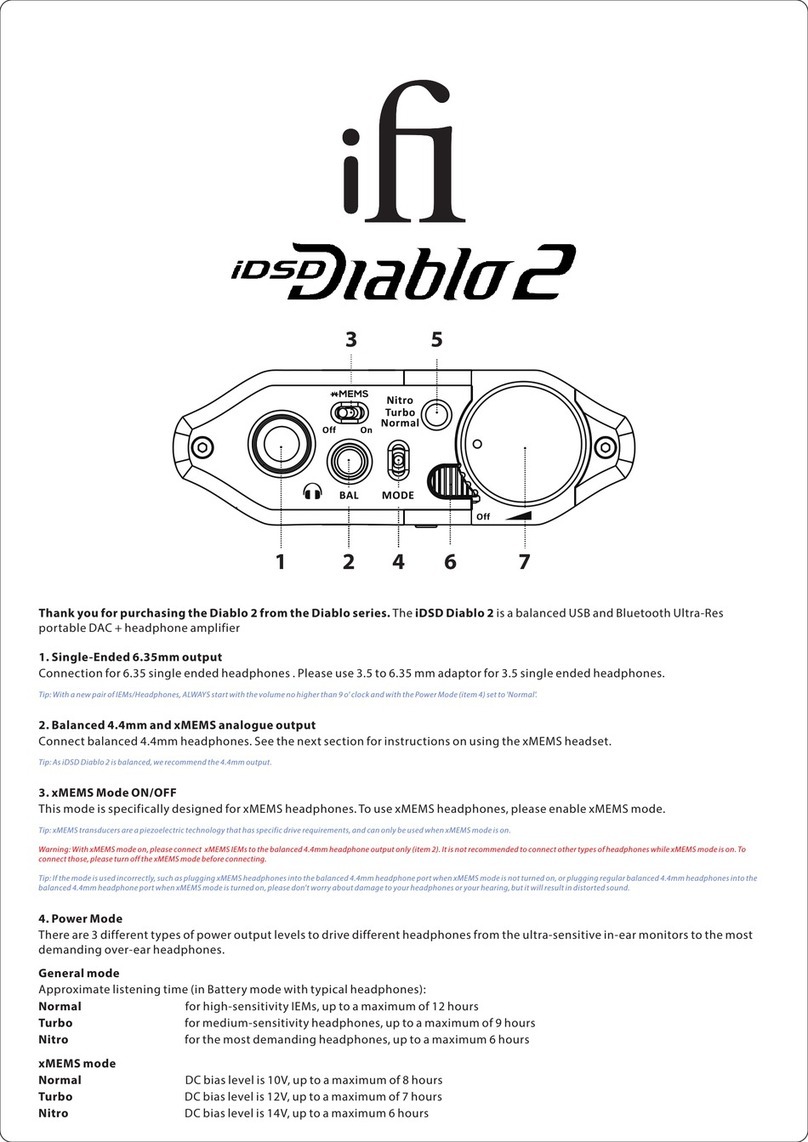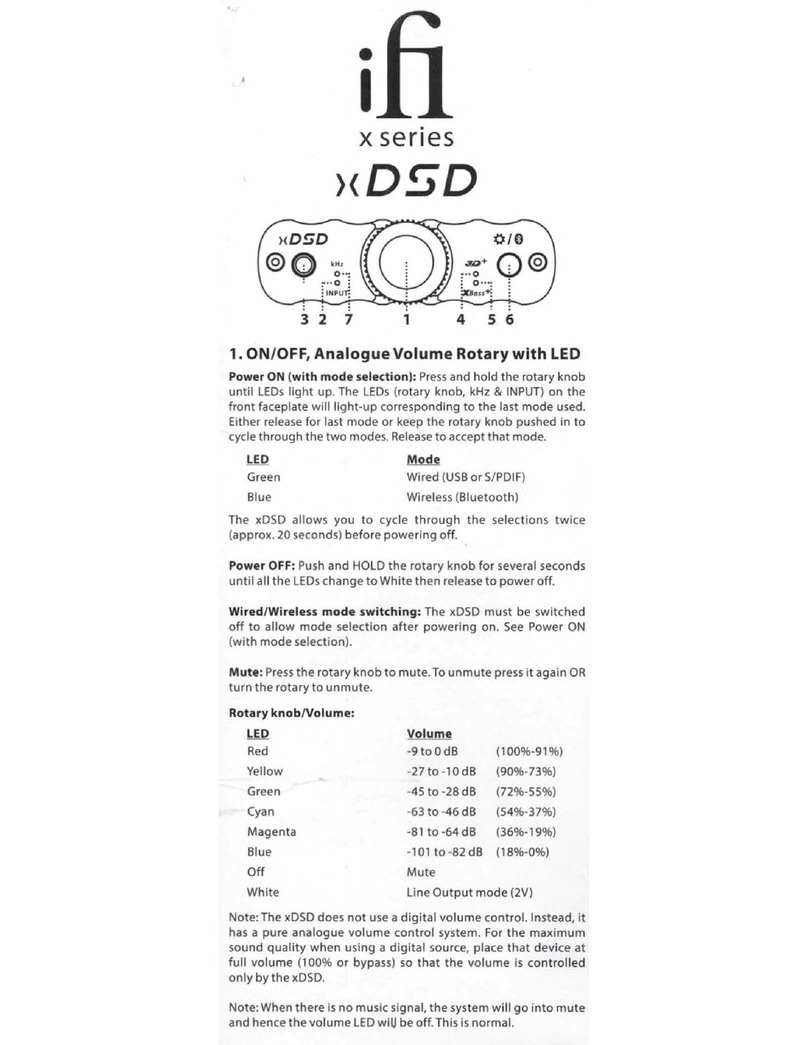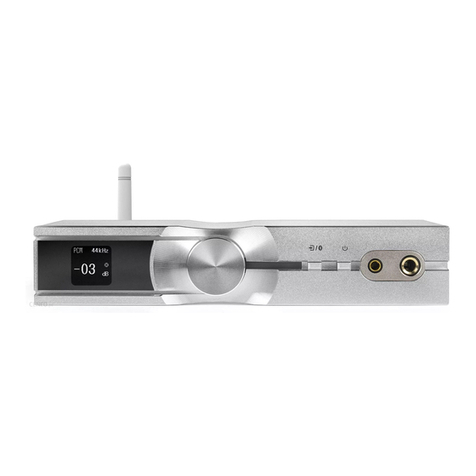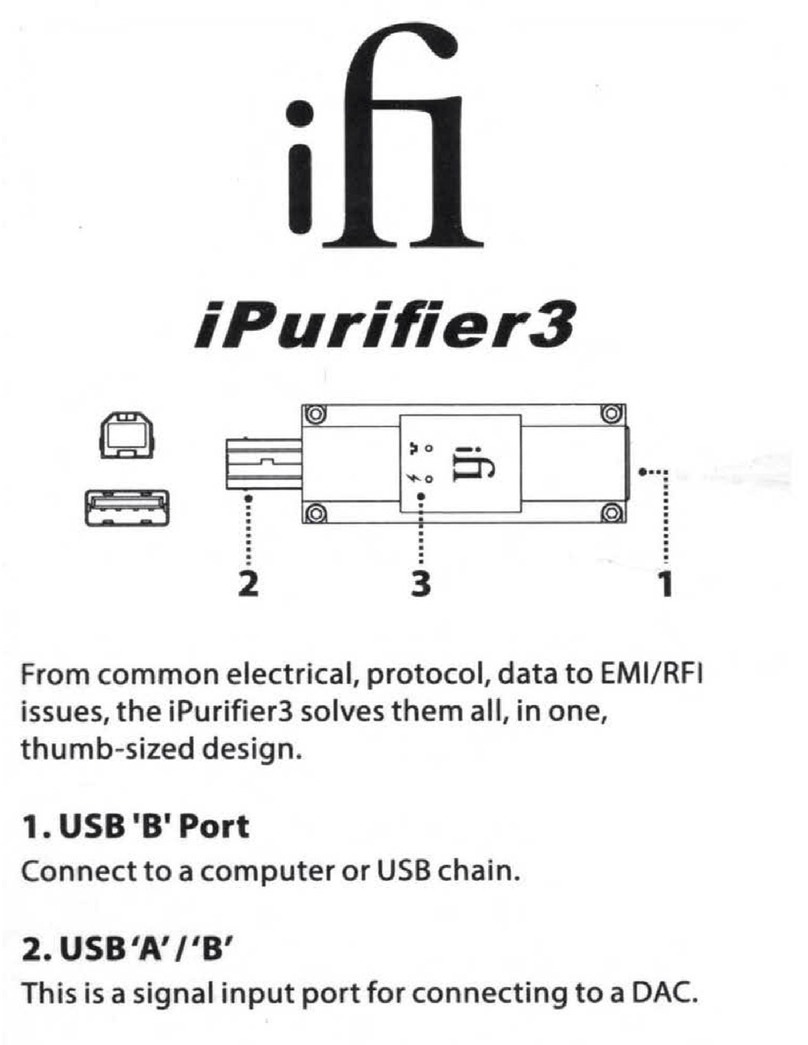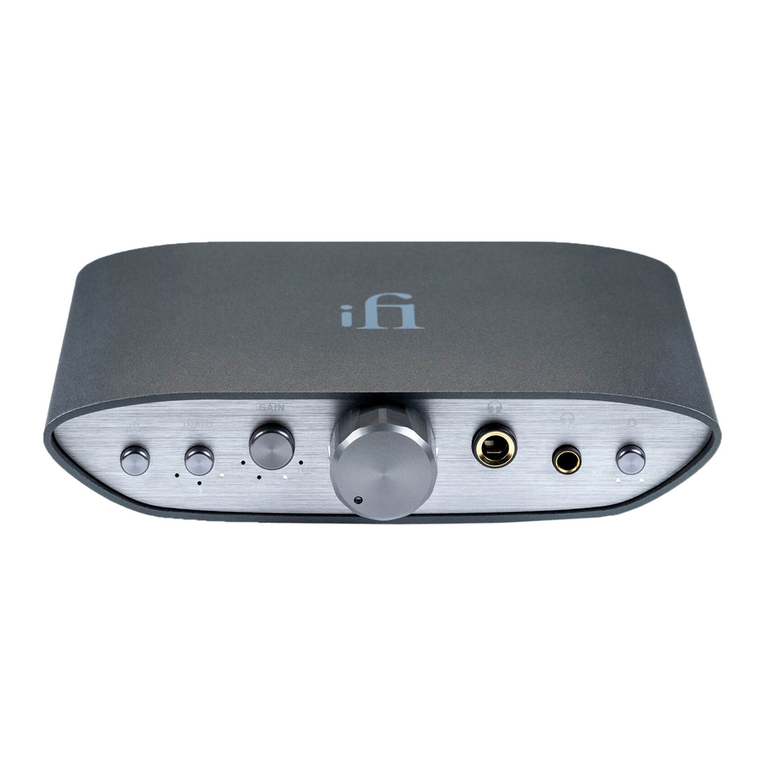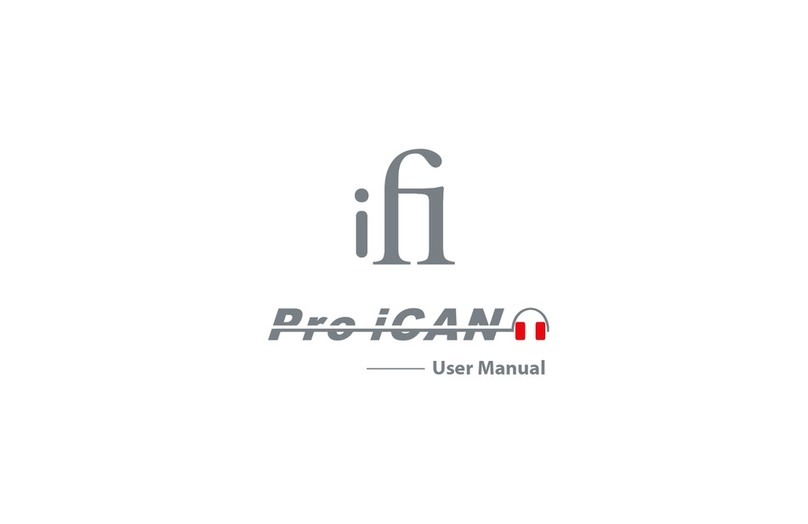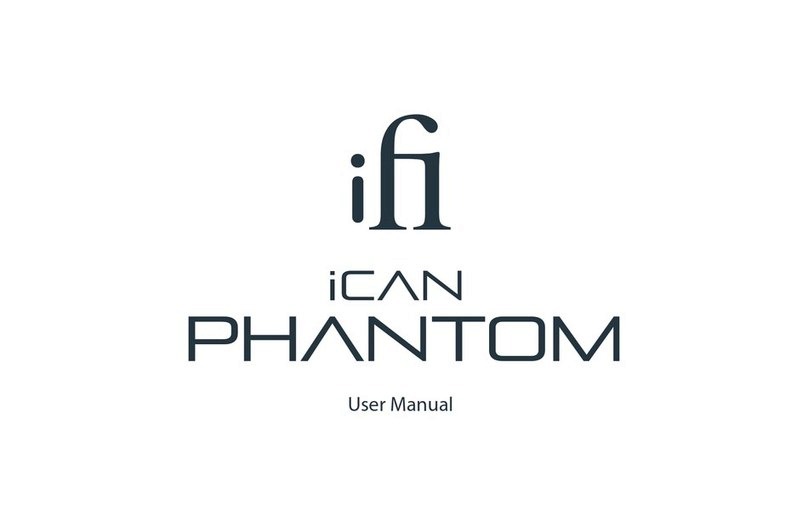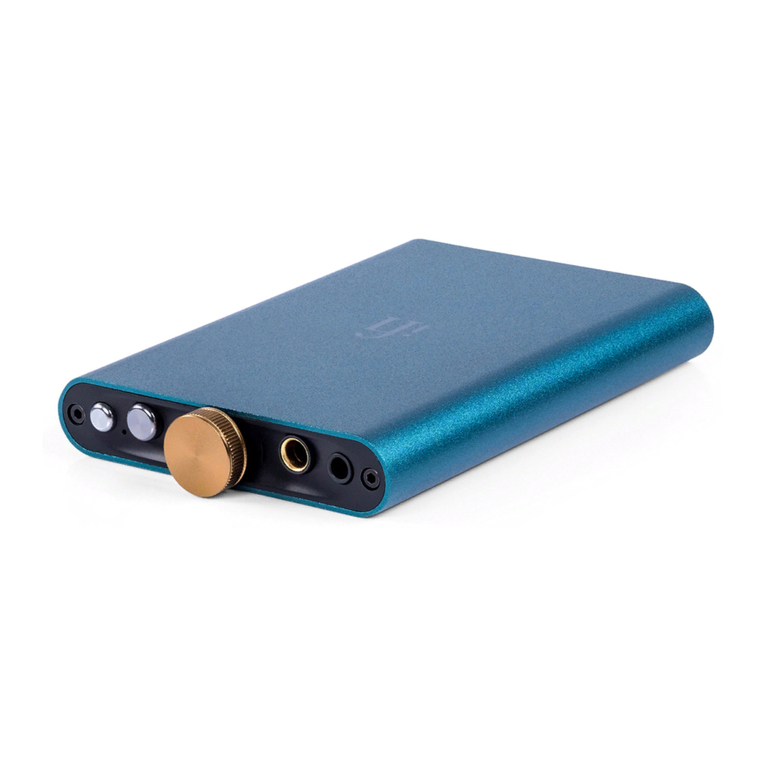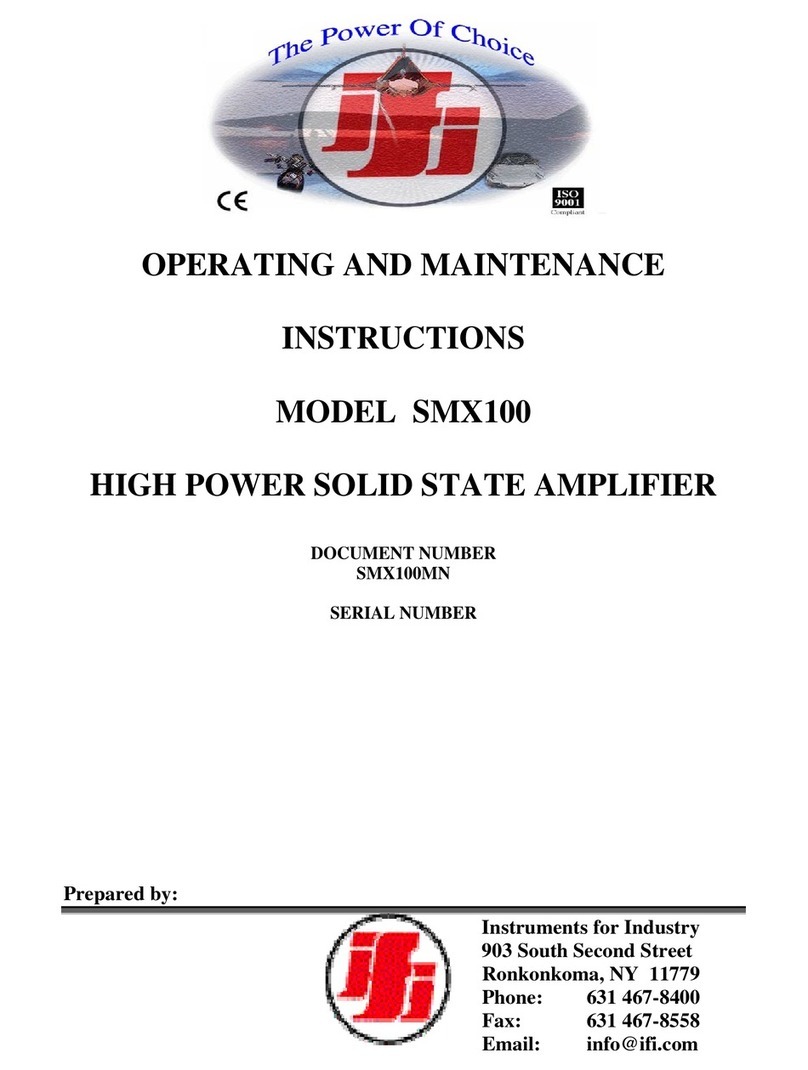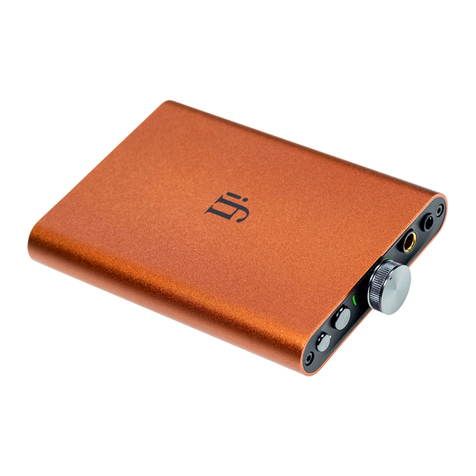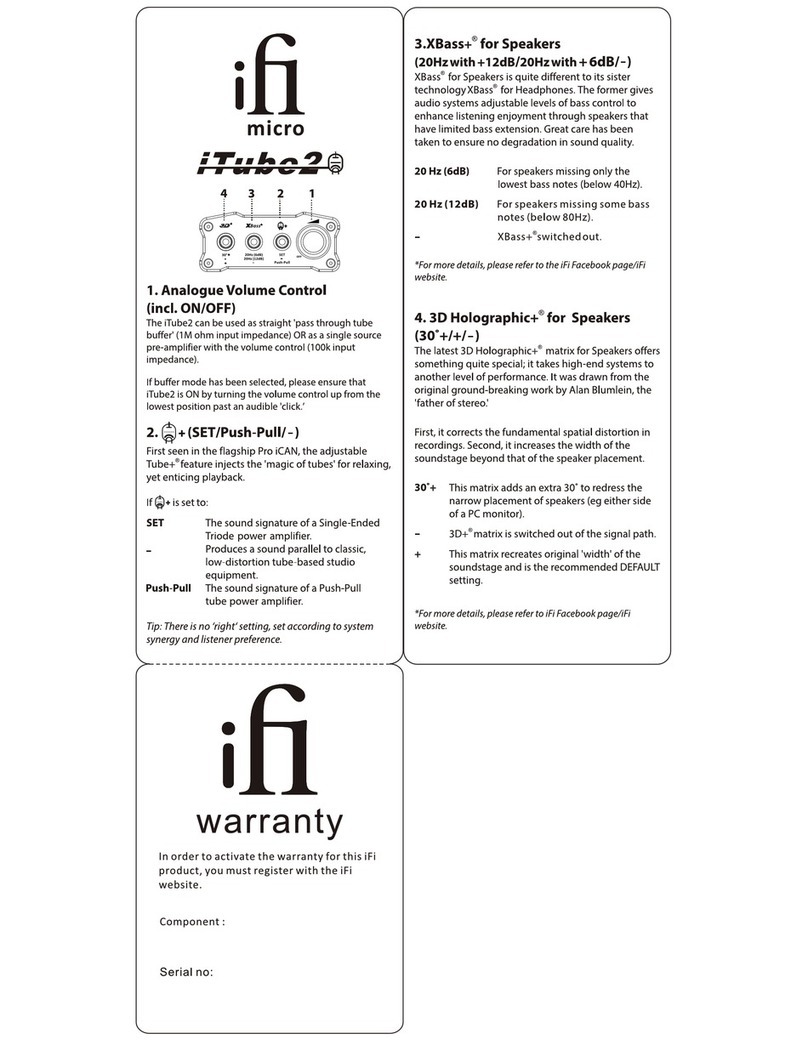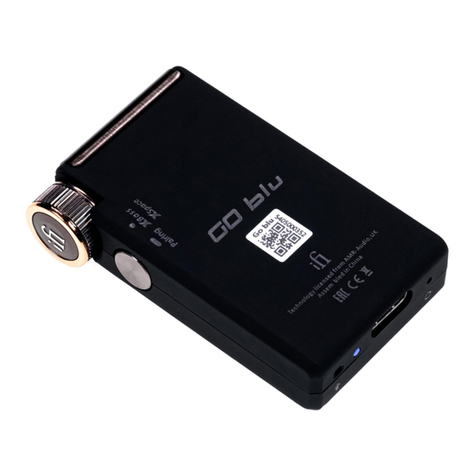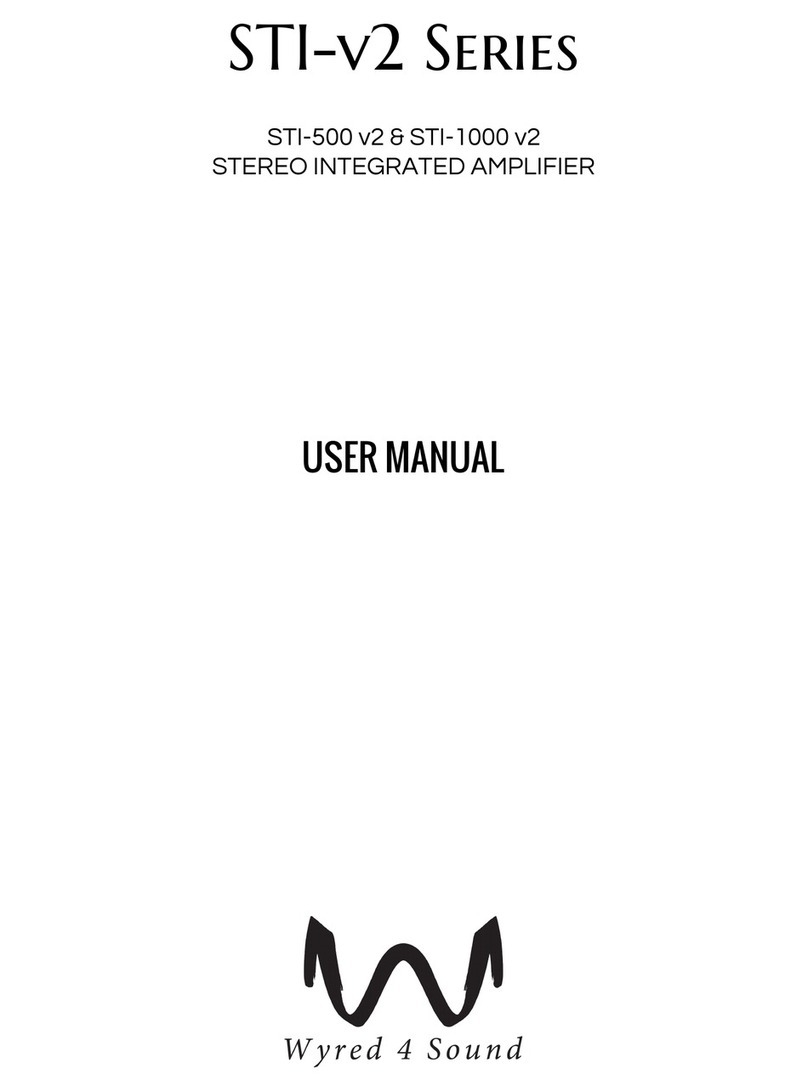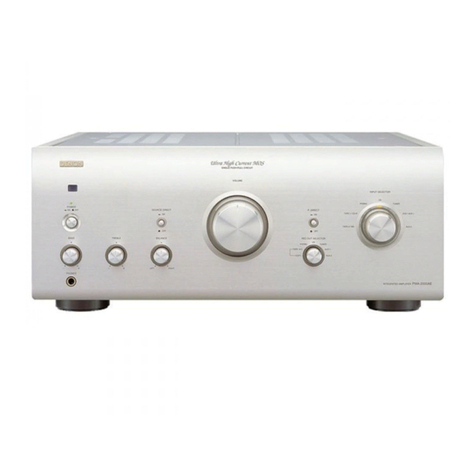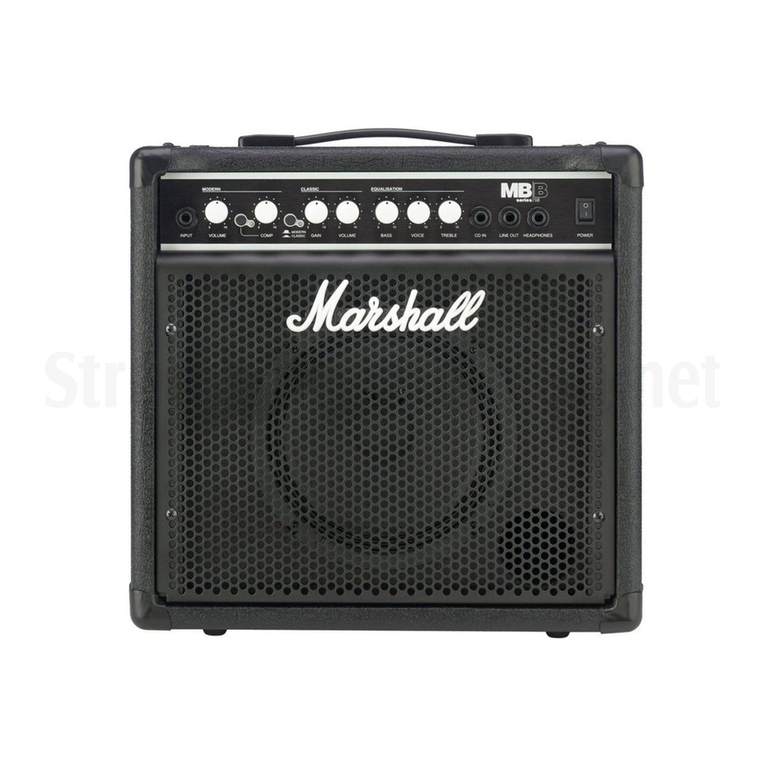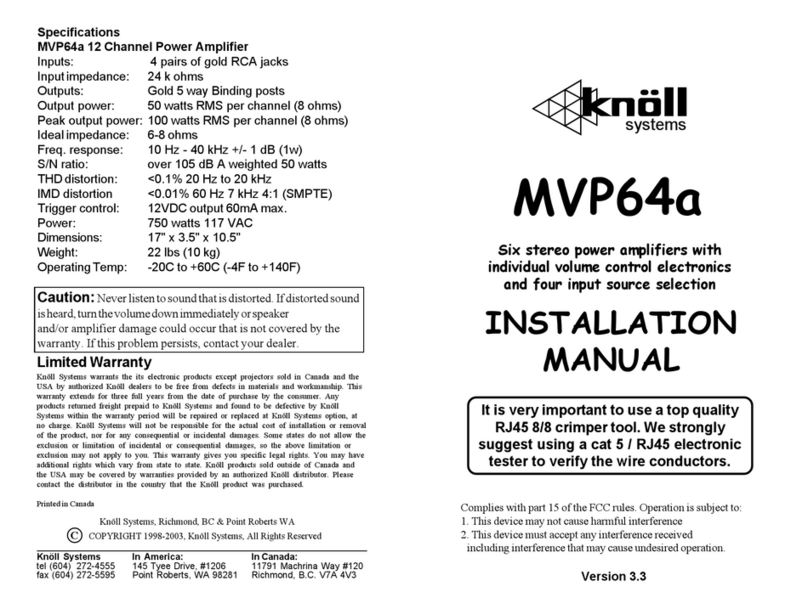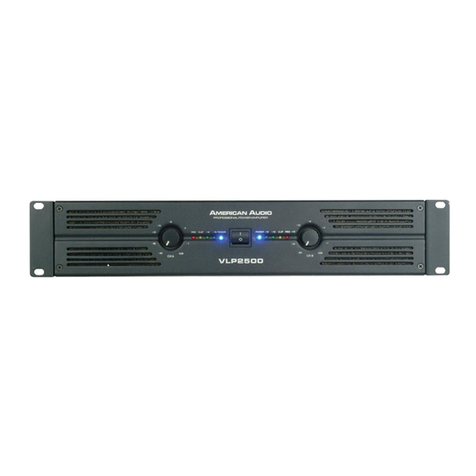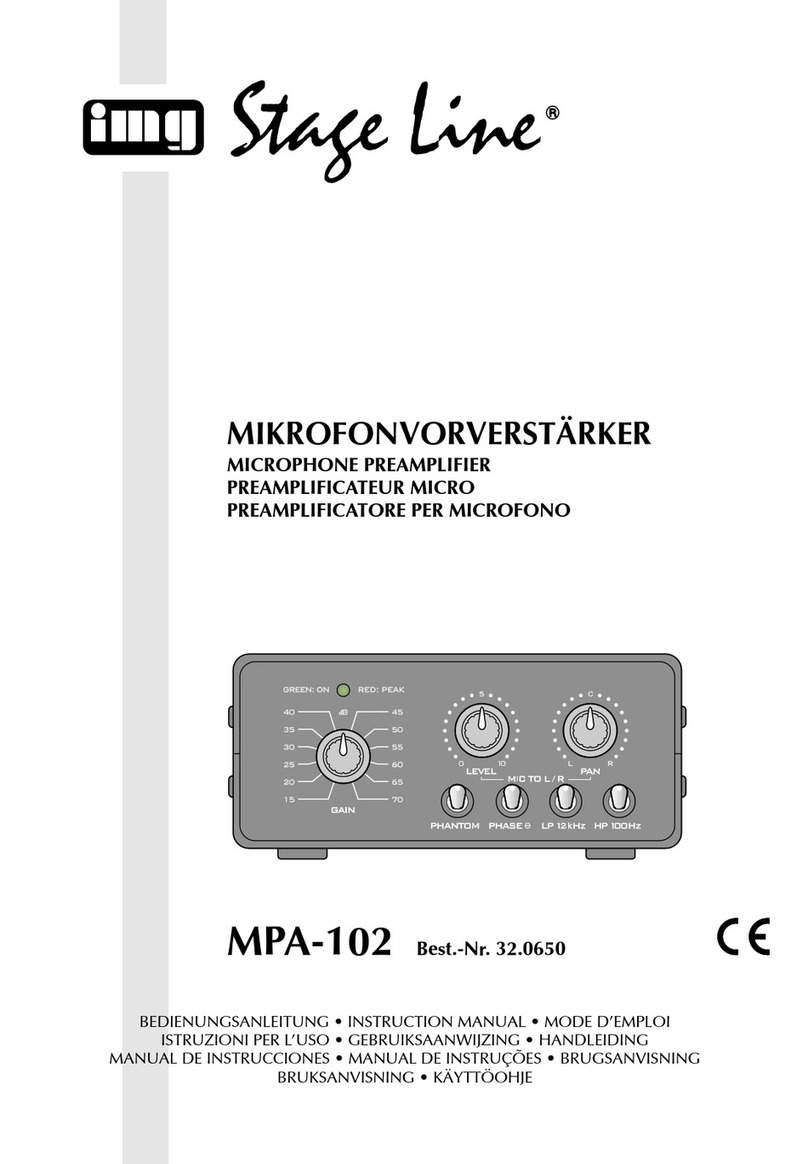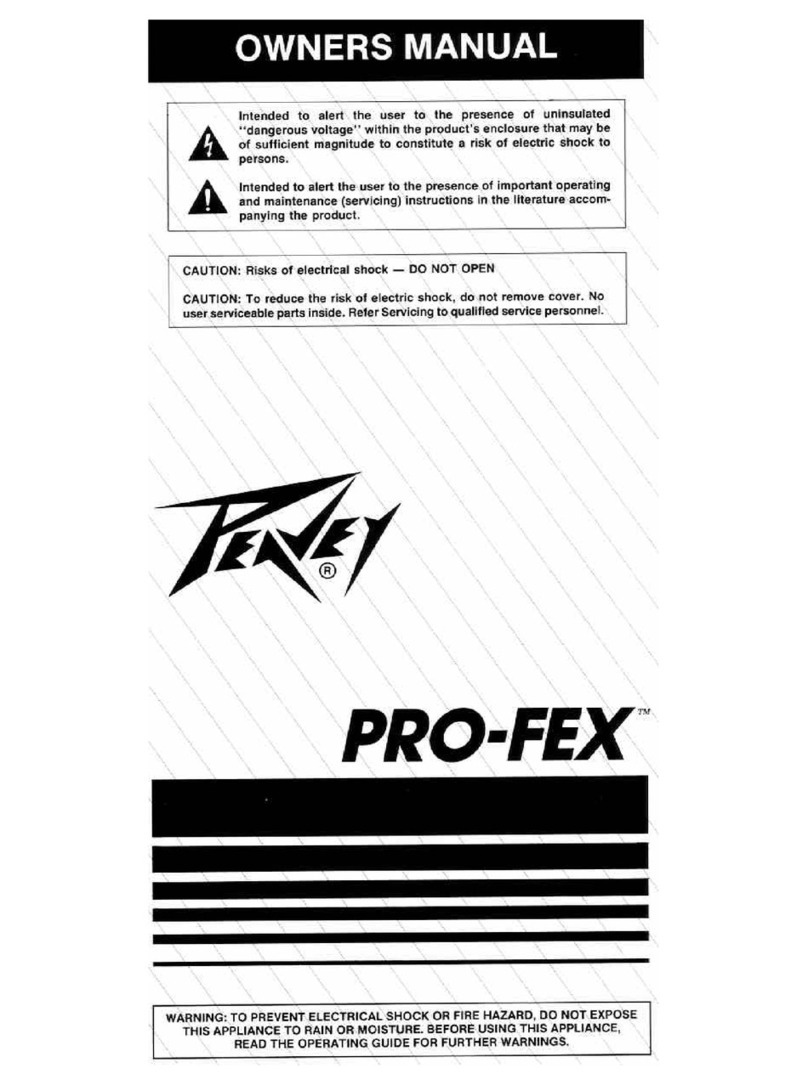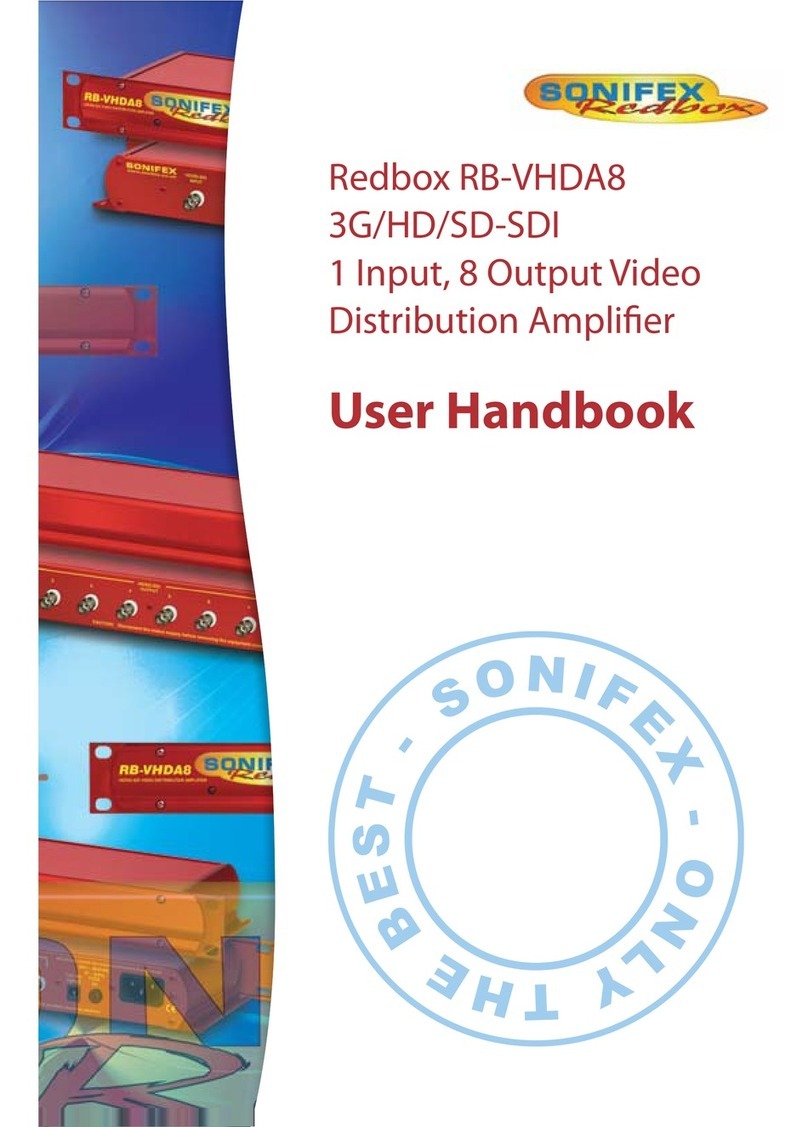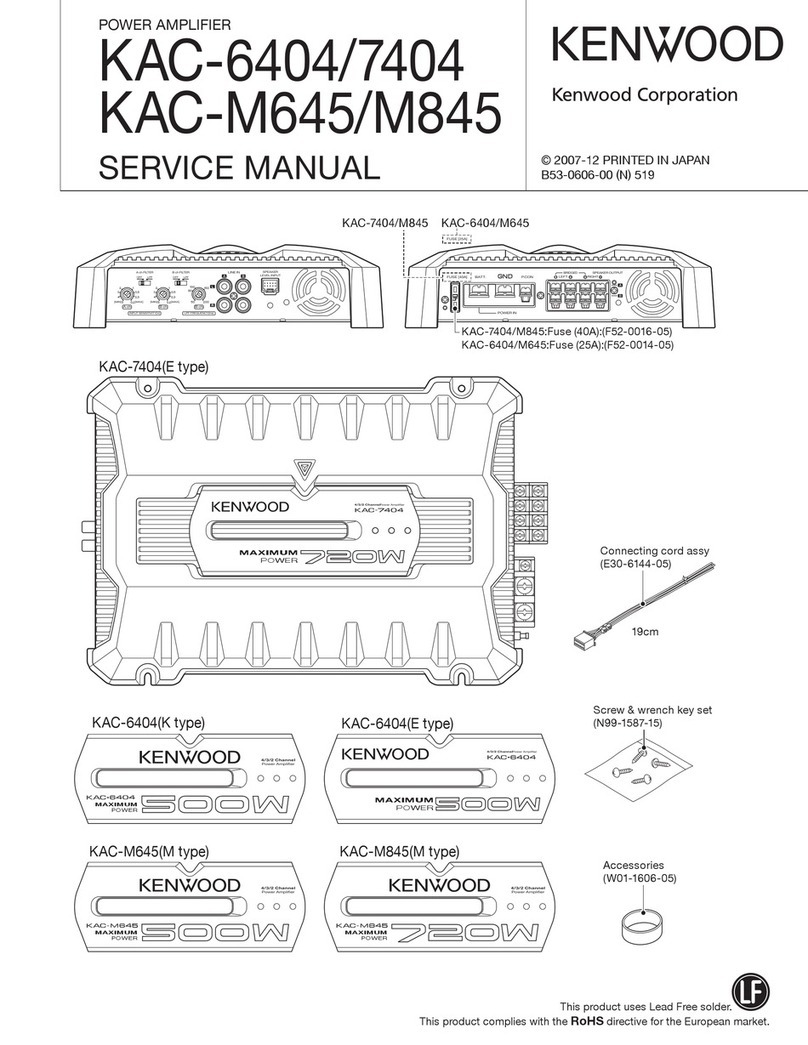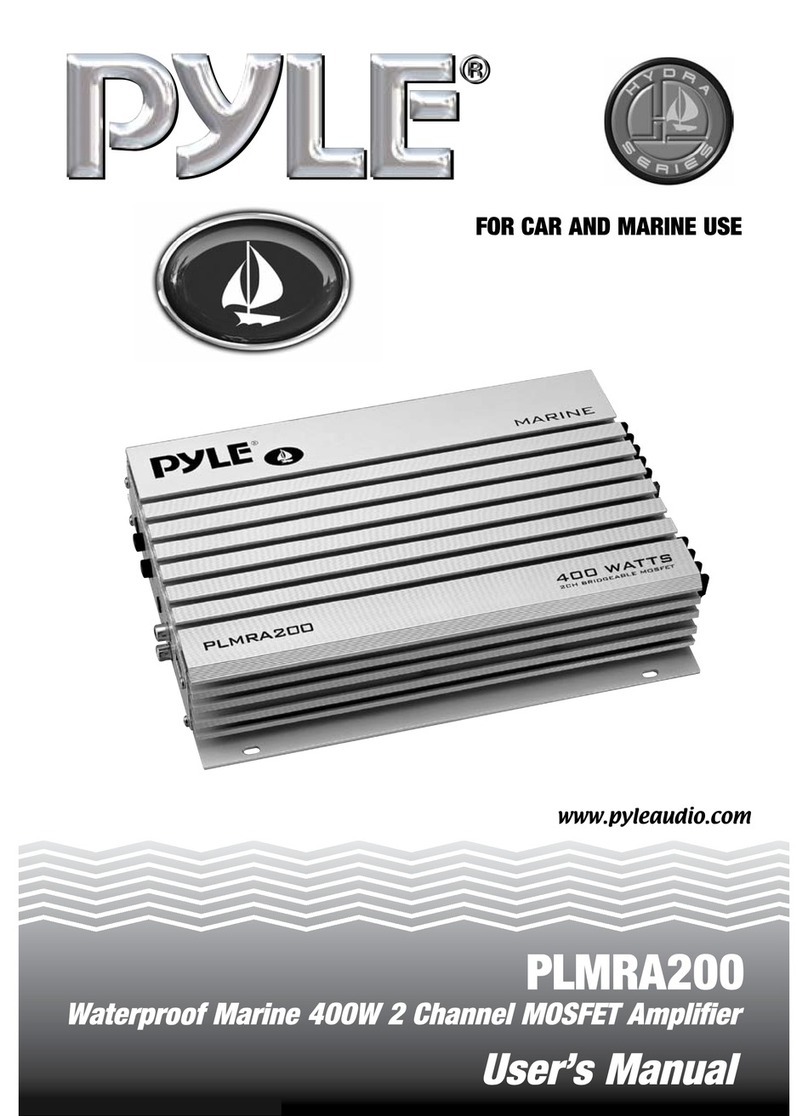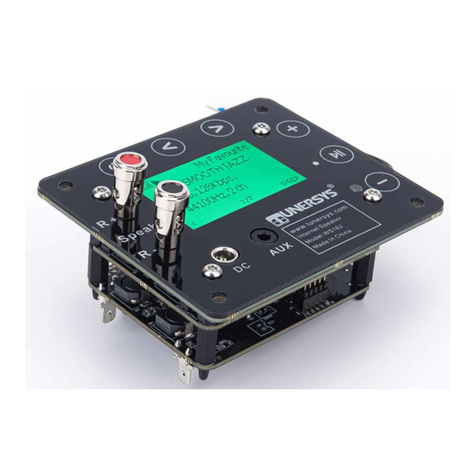ifi ZEN Phono User manual

46#40/*$
'*-5&3
.$
)*()
.. .$
7ā-08
.$
-08
108&3
5IBOLZPVGPSQVSDIBTJOHUIF1IPOPGSPNUIF;&/TFSJFT5IF
1IPOPJTBCBMBODFE...$QIPOPTUBHF
1PXFS0/0''
5IJTJTUIFQPXFSTXJUDI
..JOQVU-&%
5IJTJTB..JOQVUTVJUBCMFGPS..DBSUSJEHFTXJUIUIFPVUQVU
WPMUBHFIJHIFSUIBON71MFBTFTFMFDU(BJOBUUIFSFBS
.$)*()JOQVU-&%
5IJTJTB.$)*()JOQVUTVJUBCMFGPS.$DBSUSJEHFTXJUIUIF
PVUQVUWPMUBHFMFTTUIBOPSFRVBMUPN71MFBTFTFMFDU(BJOBU
UIFSFBS
.$-08JOQVU-&%
5IJTJTB.$-08JOQVUTVJUBCMFGPS.$DBSUSJEHFTXJUIUIF
PVUQVUWPMUBHFMFTTUIBOPSFRVBMUPN71MFBTFTFMFDU(BJO
BUUIFSFBS
.$7-08JOQVU-&%
5IJTJTB.$7-08JOQVUTVJUBCMFGPS.$DBSUSJEHFTXJUIUIF
PVUQVUWPMUBHFMFTTUIBOPSFRVBMUPN71MFBTFTFMFDU(BJO
BUUIFSFBS
46#40/*$'JMUFS0/0''
5IJTJTUIF46#40/*$GJMUFSTXJUDI
5IFJ'JEFTJHOFETVCTPOJDGJMUFSXJMMJOUFMMJHFOUMZEFUFDUXIFUIFSB
TVCTPOJDGSFRVFODZJTBXBSQPSBCBTTOPUF*UXJMMFMJNJOBUFUIF
XBSQTBOEMFUBMMUIFCBTTBOENJESBOHFGSFRVFODJFTQBTT
UISPVHIVOUPVDIFE5IFSFGPSFJUXJMMOPUBGGFDUUIFTPVOERVBMJUZ
1IPOP

#BMBODFENNBOBMPHVFPVUQVU
5IJTJTBOBOBMPHVFPVUQVUWJBNN9-3PSPUIFSCBMBODFE
JOUFSDPOOFDUT:PVDPVMEVTFUIJTGPSBOBDUJWFTQFBLFSPSBO
BNQMJGJFS
5JQ"T;&/1IPOPJTCBMBODFEUIJTJTUIFSFDPNNFOEFEPVUQVU
3$"BOBMPHVFPVUQVU
5IJTJTBOBOBMPHVFPVUQVU
(SPVOE
5IJTJTUIF;&/1IPOPhTHSPVOEQMFBTFDPOOFDUJUUPUIF
UVSOUBCMFhTHSPVOEJOHXJSF
3$"BOBMPHVFJOQVU
5IJTJTBOBOBMPHVFJOQVU
(BJODIBOOFMTXJUDI
5IJTCVUUPODZDMFTCFUXFFOHBJOMFWFMT
DPSSFTQPOETUP.. N7
DPSSFTQPOETUP.$)*() źN7
DPSSFTQPOETUP.$-08 źN7
DPSSFTQPOETUP.$7-08 źN7
1MFBTFBEKVTUUIFHBJODIBOOFMTXJUDIJOBDDPSEBODFXJUIZPVSQSFGFSFODFBOE
ZPVSUVSOUBCMFhTTQFDJGJDBUJPOT
%$7QPXFS
1MFBTFDPOOFDUUIF;&/1IPOPUPUIFFODMPTFEQPXFSTVQQMZ
5IF;&/1IPOPNVTU0/-:CFQPXFSFECZWPMUT
'PSCFTUQFSGPSNBODFVQHSBEFUIFFODMPTFEQPXFSTVQQMZUPBTVQFSTJMFOU
J1PXFS7PSUIFVMUSBMPXOPJTFJ1PXFS97QPXFSTVQQMZ
7FS
JGJBVEJPDPN
4QFDJGJDBUJPO
*OQVUWPMUBHF %$7""$7)[
XJUIUIFFODMPTFEQPXFSTVQQMZ
'SFRVFODZ3FTQPOTF
#BMBODFE )[L)[E#
4& )[L)[E#
$IBOOFM4FQBSBUJPO E#L)[BMMNPEFT
.BY0VUQVU7PMUBHF3.4
#BMBODFE 73.435)%/
4& 73.435)%/
0VUQVU*NQFEBODF
#BMBODFE 0IN
4& 0IN
4/3
..E#E# E#"XFJHIUFESF7#"-74&
.$)JHIE#E# E#"XFJHIUFESF7#"-74&
.$-PXE#E# E#"XFJHIUFESF7#"-74&
.$7-PXE#E# E#"XFJHIUFESF7#"-74&
&JOFRVJWBMFOUJOQVUOPJTF
O7])[VOXFJHIUFE .$-PX.$7-PXE#7"XFJHIUFE
O7])[VOXFJHIUFE ...$)JHI E#7"XFJHIUFE
5PUBM)BSNPOJD%JTUPSUJPO
.. E#SF7#"-74&
.$-PX; E#SF7#"-74&
.$7-PX E#SF7#"-74&
1PXFSDPOTVNQUJPO 8
%JNFOTJPOT YYNN
YY
8FJHIU HMCT
8BSSBOUZQFSJPE NPOUIT
4QFDJGJDBUJPOTBSFTVCKFDUUPDIBOHFXJUIPVUOPUJDF
%$7
-
3-
3
#"-"/$&%
*OQVU
0VUQVUT
..
.$) *()
.$-08
.$7ā-0 8
("*/
dĞĐŚŶŽ ůŽŐLJůŝĐ ĞŶ ƐĞĚĨ ƌŽŵD ZͲ ƵĚŝŽh< ƐƐ ĞŵďůĞĚŝŶ ŚŝŶ Ă
1IPOP

ZEN Phono
Lowdown

INTRODUCTION
Pedigree.Performance.Peerless.
The ZEN Phono is an entry level phono stage with a
difference. Normally, sub £200 phono stages add
excessive noise that hinders musical enjoyment.
The iFi ZEN Phono is an exception to the rule due to its
trickle-down know-how from AMR/iFi phono pre-amps.
First and foremost, the noise floor is a whisper-quiet –
90/96dB (36/60dB, BAL 2V/SE 1V, A-weighted) on
MM/MC respectively.
It is also able to handle MM/MC cartridges from
<0.25mV to >2mV to bring true high-end performance
and flexibility to the entry sector.
Finally, the ZEN Phono has the performance and the
features not found in many other phono stages:
•MM/MC-36dB >72dB gain. Noise floor of –
90/96 dB
• Balanced circuitry – unheard of in this category
• Intelligent Subsonic filter – solves warp issues
effectively
3

BOX CONTENT
Guide:
1. Power ON/OFF
This is the power switch.
2. MM input LED
This is aMM input suitable for MM
cartridges with the output
voltage higher than 2mV.Please
select Gain 1at the rear.
3. MC HIGH input LED
This is aMC HIGH input suitable
for MC cartridges with the output
voltage less than or equal to 2mV.
Please select Gain 2at the rear.
4. MC LOW input LED
This is aMC LOW input suitable
for MC cartridges with the output
voltage less than or equal to
0.5mV.Please select Gain 3at the
rear.
5. MC V-LOW input LED
This is aMC V-LOW input suitable
for MC cartridges with the output
voltage less than or equal to
0.25mV.Please select Gain 4at
the rear.
6. SUBSONIC Filter ON/OFF
This is the SUBSONIC filter switch.
The iFi-designed subsonic filter
will intelligently detect whether a
subsonic frequency is awarp or a
bass note.It will eliminate the
warps and let all the bass and
mid-range frequencies pass
through untouched.Therefore, it
will not affect the sound quality.
1 2 3 4 5 6
4

CONNECTIONS
Power input
DC 5V*
Balanced Output
4.4mm
Grounding
Terminal
RCA Output
RCA Input
5

TECHNOLOGIES
Regenerated power supply
Top of the range audiophile phono amplifiers
create their own power supplies off the mains, like
amains regenerator.This is the starting point for
any good phono stage because without this, it will
struggle to amplify the signal and not add noise.
The super quiet ZEN Phono is dedicated to this
cause.It creates a 1.2MHz power supply (20,000x
mains frequency of 60Hz).Here, a 10uF filtering
capacitor equals 200,000uF at lower frequency.The
result? VERY large filtering, as per classic LC filtering
in tube amplifiers.Located on its own ‘island’ so no
surrounding noise pollution.It outputs super clean
+/- 12V DC.
6

TECHNOLOGIES
RIAA EQ at military specification level
Famous 2-stage circuitry with the latest op-amps.
Equalization uses multiple parallel TDK C0G
capacitors for the best stability and least distortion
possible, even when compared to polystyrene
capacitors.They are nearly as good as Teflon.
Despite already using the lowest tolerance
capacitors and multiples in parallel, tolerance is
exponentially improved by the square root of the
number of capacitors.The ZEN Phono achieves
RIAA EQ tolerance level (+/- 0.15dB) which is en par
with hand-selected capacitors!
7

TECHNOLOGIES
No ordinary sub-sonic filter
Issue:
Normal subsonic filters remove ‘rumble’ AND bass
AND phase issues.
Solution:
The iFi AI Subsonic filter removes ‘rumble’ ONLY and
so has only apositive impact on sound.
Our own unique AI Subsonic filter has been used
since our first iPhono in 2012. Thereafter in the
iPhono2and the iPhono3Black Label and now, the
ZEN Phono.There is no other £200 phono stage
that has this.
8

TECHNOLOGIES
With agreat circuit comes great components
With some serious boutique audio components behind acircuit design that uses trickle down tech from its
ultra-fidelity AMR PH-77 and iFi iPhono siblings, from the moment you lower the needle, you will be
immersed, playing ‘just one more album’ into the wee, small hours.
Works with any cartridge
With MM/MC, high/low and very low, the ZEN Phono is able to handle just
about any cartridge.From 36dB all the way up to 72dB.So, as your vinyl
system grows over time, the ZEN Phono will keep easily keep up.
Balanced circuit design
Balanced circuits are just not seen at this price point.It is asuperior method
to the traditional single-ended circuit approach.Balanced circuits reduce
noise and crosstalk.Less Interference –clearer sound.
9

TECHNOLOGIES
iFi/AMR‘OV’ ICs
This OV series operational amplifier is another example of a top-notch
component used to get the best sound quality out of our products.The
OVA2637 op-amp is used as it has low noise density and low distortion
(0.0001%). This is an amplifier that performs on a much higher level
sonically than the product price suggests.
Panasonic ECPU capacitors
Each ECPU capacitor is constructed from some 3,500 layers of ultra-thin
dielectrics less than 0.5μm thick.It offers class-leading Equivalent Series
Resistance (ESR), low impedance and frequency stability and vanishingly low
distortion.
10

TECHNOLOGIES
Texas Instruments ICs
TI low-noise ICs offer great Unity-Gain Bandwidth, very low-noise, high
output-drive capability, Common-Mode Rejection Ratio:100 dB and
maximum-output-swing bandwidths, low distortion and high slew rate.
Class 1 ceramic TDK C0G
TDK C0G capacitors offer high stability and low losses for resonant circuit
applications.They are pricey but are aperfect addition to our products.
Multi-layer capacitors
The ZEN Phono uses muRata control-type, low-ESR high-Q multi-layer
capacitors.The ‘ESR control’ aspect of the muRata is something special.Their
noise suppression abilities are impressive.
11

COMPONENTS
12

OUR VINYL DNA
Ashort history of our vinyl DNA
AMR made the PH-77 which was a £12,000 ‘Stereophile
Class A’ rated phono stage.It is adual-mono, 35 kilo beast.
It just sounds amazing.
Michael Fremer said, “The PH-77 is asweet, tonally well-
balanced, quiet performer that produced a large,
authoritative sonic picture packed with honest detail.”
iFi audio made the iPhono, and the iPhono2and then,
most recently we launched the iPhono3Black Label that
pushes the performance of our phono stages even further
Michael Fremer’s advice, “If you own an iPhono2and love
it, sell it and buy an iPhono3. It’s that much better.The
improvement isn’t incremental.It’s amajor step forward.”
One customer said of the new iPhono3Black Label, “My
wife and Iagree on the term “sweet” which is not an
adjective I’ve ever heard to describe an audio component.
But it is quite involving, and we don’t want to stop
listening."
Mr. D. O.
Our experience of making quite exceptional phono stages
is long-standing and deep-rooted in the £1,000 and
£12,000 sectors.
We have distilled much of the AMR/iFi audio vinyl design
into the £200 segment with the ZEN Phono.It makes your
vinyl come alive.
13

FAQs
•What is it?
It is aphono preamplifier that amplifies the low level
signal from aturntable’s pickup to aline level signal that
can be applied to amplifiers, preamplifiers, mixers, A/D
converters etc.The ZEN Phono also applies the required
equalization per the RIAA standard.
While designed to be sold at ahighly competitive price
point and using ultra-modern manufacturing methods,
the ZEN Phono’s fundamental design is based on classic
ultra-fidelity products. These were, in their time,
considered as market defining (Vendetta Labs SCP-2, AMR
PH-77). The ZEN Phono offers true high end performance,
objectively and subjectively.
•Who should use it?
It is an extremely high performance phono stage, which is
compatible with all kinds of vinyl pickups and can be
used either to connect a turntable to an amplifier without
asuitable input, or as substantial upgrade over in-built
phono circuitry.
14

FAQs
•How do Iconnect the ZEN Phono to my turntable?
You need to connect your turntable’s RCA outputs with
the RCA inputs on the ZEN Phono’s rear, and also connect
your turntable’s ground with ZEN Phono’s grounding pin.
This is located just next to its inputs.
•How do Iconnect the ZEN Phono to my amplifier?
From your ZEN Phono output of choice, you go to your
amplifier’s inputs.The ZEN Phono is afully balanced
product, so if your amplifier is balanced as well, we
suggest you use the ZEN Phono’s 4.4mm
Pentaconn output with asuitable cable.For equipment
with XLR balanced inputs, a 4.4mm ->2 * XLR cable is
required.For equipment with ¼” jack inputs, a 4.4mm -> 2
* 1/4 “ jack cable is required.
•What types of cartridges can the ZEN Phono
handle?
The ZEN Phono works with all electro-dynamic stereo
cartridges currently and historically manufactured,
excluding optical, capacitive and strain gauge types
which are exceedingly rare and require dedicated
electronics.Please refer to the manual and our online
calculator for detailed settings. (https://ifi-
audio.com/home/iphono-calculator/)
15

FAQs
•How do Iknow which cartridge setting is for me?
Please see your cartridge’s instruction manual, and select
its type and gain setting via the gain switch located just
next to the DC input on ZEN Phono’s rear.
Alternatively, connect your turntable and try to play an LP
in the MM setting of the selector.Should this not give
acceptable playback levels at anormal volume setting (i.e.
the volume is too low), move the cartridge selector to
next higher gain position, turning the ZEN Phono OFF
before changing the switch position. Please repeat until
playback levels are normal.
If you find the playback is too loud and/or distorted
despite the volume being set very low, please move the
cartridge selector one step towards the MM position,
turning the ZEN Phono OFF before changing the switch
position. Please repeat until playback levels are normal.
You may not be able to use the same volume setting as
you do with modern CDs or downloads as many LPs are
mastered less “loud”, with greater dynamic range than
modern digital recordings.It is normal to have to use a
higher volume setting than with digital sources.If in
doubt, select the lowest gain (closest to MM) setting that
gives satisfying playback levels and does not require you
to turn the volume up excessively.
16

FAQs
•How will Iknow that the ZEN Phono engaged the
right setting for my cartridge?
One of four LEDs on the ZEN Phono’s front will indicate
the setting selected via the gain switch on its rear.Please
see if aLED corresponding with your cartridge is
engaged.
•Can Iuse aDC power supply more powerful than
suggested 5V?
As long as the voltage is 5V +/-10%and with the correct
polarity any power supply, (including USB using asuitable
adapter cable), can be employed.
•Can Ipower ZEN Phono from my USB port?
If it provides 5V as requested and you have asuitable
cable, then yes.
•Is ZEN Phono’s DC input with acenter pin positive
or negative?
ZEN Phono’s center DC pin is positive.
17

FAQs
•How is the ZEN Phono’s 4.4mm balanced output
wired?
It’s wired accordingly to the Sony standard.
•Can the ZEN Phono be powered on all the time?
Yes, it can be powered on constantly, but to be kind to the
planet, we suggest to power it off if you don’t intend to
use it.
•What does the ‘subsonic filter’ button do? And
should Ihave it engaged?
The subsonic filter removes extreme low frequencies
resulting from warped records (records that are not
perfectly flat).Such signals can cause the so-called
“woofer pumping” effect, excessive distortion and
possibly damage to speakers if the volume is set too high.
The way the filter is implemented in the ZEN Phono only
removes the unwanted (vertical) extreme low frequencies,
however actual bass signals present on the LP are allowed
to pass unaltered with a -3dB point of 16Hz (generally the
lowest signals that are cut on LP tend to be 32Hz and up).
You should engage this filter if your woofers show visible
“pumping” as in this video.
18
Table of contents
Other ifi Amplifier manuals

